Get a free quote
If you have questions about our services, plans, or pricing we are here for you. Fill out the form below and we will communicate with you by email (and of course provide you with a free estimate).
FEBRUARY 01 2022 /
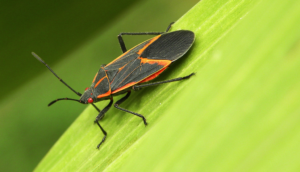 Boxelder bugs are one of the most common pests in NC. These slow-moving insects grow to be about half an inch tall as an adult. The adolescent boxelder bugs can easily be distinguished thanks to their red abdomens and lack of wings. Adult boxelder bugs, on the other hand, are grey-black with three red lines across the thorax (the part just behind the head) and across each wing.
Boxelder bugs are one of the most common pests in NC. These slow-moving insects grow to be about half an inch tall as an adult. The adolescent boxelder bugs can easily be distinguished thanks to their red abdomens and lack of wings. Adult boxelder bugs, on the other hand, are grey-black with three red lines across the thorax (the part just behind the head) and across each wing.
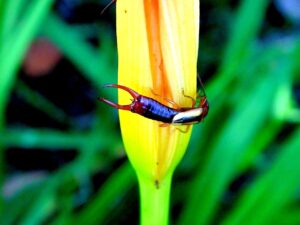 Earwigs are one of the most bizarre looking pests on this list. As adults, they can grow up to one inch long with an elongated, flat body. The red legged earwig is a native species common in the South and Southwest regions (especially here in the Carolinas).
These insects have pincers called “cerci” that are used as both offensive and defensive weapons. They can even be used to capture prey! Earwigs also have an unpleasant odor that’s released when they’re crushed so be mindful of that when killing them.
Earwigs are one of the most bizarre looking pests on this list. As adults, they can grow up to one inch long with an elongated, flat body. The red legged earwig is a native species common in the South and Southwest regions (especially here in the Carolinas).
These insects have pincers called “cerci” that are used as both offensive and defensive weapons. They can even be used to capture prey! Earwigs also have an unpleasant odor that’s released when they’re crushed so be mindful of that when killing them.
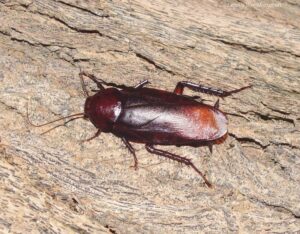 You can spot a smoky brown cockroach by their rich mahogany color. They can grow to 1.5 inches in length and have a set of long wings. Lucky for us, young nymphs are unable to fly. Unlucky for us, these cockroaches will be able to take flight one they reach adulthood.
You can spot a smoky brown cockroach by their rich mahogany color. They can grow to 1.5 inches in length and have a set of long wings. Lucky for us, young nymphs are unable to fly. Unlucky for us, these cockroaches will be able to take flight one they reach adulthood.
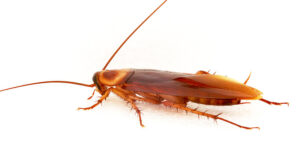 This type of cockroach is the most common species in the US. The American cockroach ranges in size from 1 3/8 inches to 2 1/8 inches in length. Compared to the Smoky Brown variety, this common pest is generally lighter in color. Although they rarely fly, if they start from a high point, like a tall tree, they can glide for a good distance.
This type of cockroach is the most common species in the US. The American cockroach ranges in size from 1 3/8 inches to 2 1/8 inches in length. Compared to the Smoky Brown variety, this common pest is generally lighter in color. Although they rarely fly, if they start from a high point, like a tall tree, they can glide for a good distance.
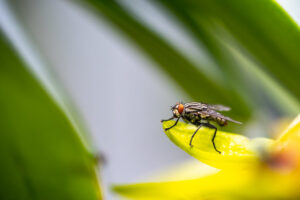 This next common pest is one we’ve all dealt with. House flies are not only common pests in NC, but all over the world. Less than ¼ inch long, these are the most annoying pests of the bunch. They have robust bodies and two clear wings that make them powerful fliers. Similar to bees, they produce a noticeable buzzing sound when flying nearby.
This next common pest is one we’ve all dealt with. House flies are not only common pests in NC, but all over the world. Less than ¼ inch long, these are the most annoying pests of the bunch. They have robust bodies and two clear wings that make them powerful fliers. Similar to bees, they produce a noticeable buzzing sound when flying nearby.
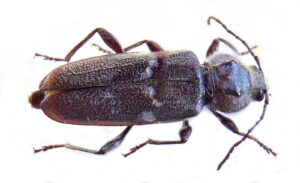 Old House Borer Beetles range in color from black to gray and are only about 5/8 to 1 inch in length. They have long antennae and almost look similar to cockroaches in shape.
Old House Borer Beetles range in color from black to gray and are only about 5/8 to 1 inch in length. They have long antennae and almost look similar to cockroaches in shape.
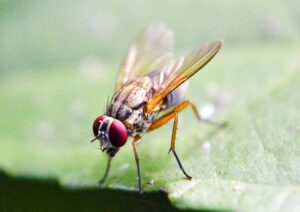 Out of all the common pests in NC, the fruit fly has to be the smallest. Fruit flies are only about three millimeters long and look like a miniature version of a house fly. The only difference is their unique red eyes and the fact that they’re completely silent when flying, making them hard to notice.
Out of all the common pests in NC, the fruit fly has to be the smallest. Fruit flies are only about three millimeters long and look like a miniature version of a house fly. The only difference is their unique red eyes and the fact that they’re completely silent when flying, making them hard to notice.
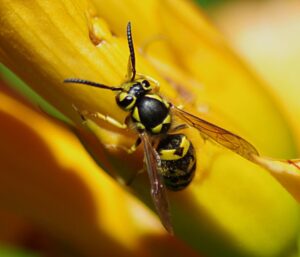 Native to North Carolina is the southern yellow jacket, named for their yellow and black color pattern. The queen of the southern yellow jackets will always look different from her workers because she’s very large (and in charge) and predominantly orange rather than yellow.
Native to North Carolina is the southern yellow jacket, named for their yellow and black color pattern. The queen of the southern yellow jackets will always look different from her workers because she’s very large (and in charge) and predominantly orange rather than yellow.
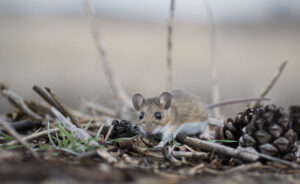 We have two species of mice that are very common pests in NC — the deer mouse and white footed mouse.
First is the deer mouse, the more common of the two. Its head and body are roughly two to three inches long with its tail adding a few more inches in length. The deer mouse’s upper body ranges from a light gray to reddish brown, depending on its age. The underbelly and tail is always white.
The white footed mouse looks very similar to the deer mouse so they can be hard to tell apart. The head and body together are only about four inches long with a short tail that’s usually no longer than two inches. Topside, its fur ranges from pale brown to reddish brown, while its underside and feet are also completely white.
We have two species of mice that are very common pests in NC — the deer mouse and white footed mouse.
First is the deer mouse, the more common of the two. Its head and body are roughly two to three inches long with its tail adding a few more inches in length. The deer mouse’s upper body ranges from a light gray to reddish brown, depending on its age. The underbelly and tail is always white.
The white footed mouse looks very similar to the deer mouse so they can be hard to tell apart. The head and body together are only about four inches long with a short tail that’s usually no longer than two inches. Topside, its fur ranges from pale brown to reddish brown, while its underside and feet are also completely white.
